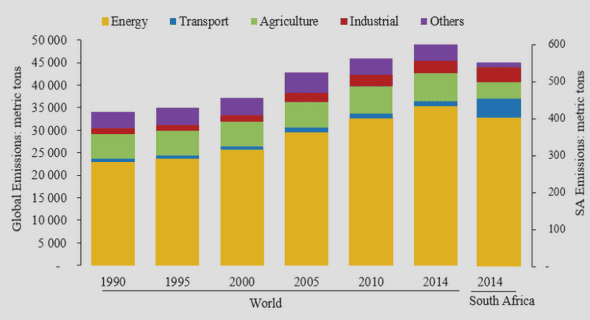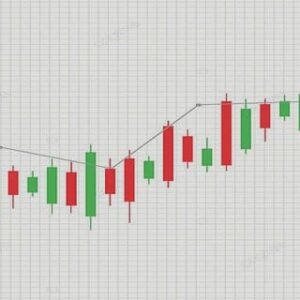(Downloads - 0)
For more info about our services contact : help@bestpfe.com
Table of contents
I Out-of-equilibrium statistical physics
A Equilibrium versus non-equilibrium
1 Physical properties of equilibrium and non equilibrium systems
a) Equilibrium and entropy maximization
b) Non equilibrium and macroscopic currents
2 Dierent frameworks for out-of-equilibrium physics
B Markov chains and stationary states
1 Markov chains
a) Discrete time
b) Continuous time
c) Stationary state
2 Thermodynamic equilibrium and detailed balance
a) Time reversibility
b) Link with the Boltzmann distribution
3 Non-equilibrium stationary states
C Toward a description of NESS?
1 Generalized detailed balance and uctuation theorem
2 Dynamic observables and deformed Markov matrix
3 Gallavotti-Cohen symmetry and uctuation theorem
4 Large deviation functions
a) Large deviation principle
b) Legendre transformation and Gartner-Ellis theorem
c) Application to out-of-equilibrium statistical physics
II Integrability
A Introduction, motivations and formalism
1 Conserved quantities
a) Introduction and motivations
b) Markovian case
2 Exclusion processes framework
a) The conguration space
b) Markov matrix
B Integrability for periodic boundary conditions
1 R-matrix and transfer matrix
a) R-matrix and Yang-Baxter equation
b) Transfer matrix
2 How to nd R-matrices?
a) Direct resolution of the Yang-Baxter equation
b) Quantum groups
c) Baxterization
3 Diagonalization of the transfer matrix
a) Coordinate Bethe ansatz
b) Algebraic Bethe ansatz
c) Other methods
C Integrability for open systems
1 Reaction matrices and transfer matrix
a) K-matrices and reaction equation
b) Transfer matrix
2 How to nd K-matrices?
a) Direct resolution of the reaction equation
b) Baxterization
3 Diagonalization of the transfer matrix
III Matrix ansatz for non-equilibrium steady states
A Presentation of the method and link with integrability
1 General idea and example
a) General idea
b) Historical example of the TASEP
c) Pushing procedure for the open TASEP
2 Telescopic relations
a) Particular example of the TASEP
b) General case
c) Other examples
3 Thermodynamic equilibrium case
a) Some examples
b) A new look on the open TASEP stationary distribution
4 Link with integrability
a) Algebraic setup
b) Zamolodchikov-Faddeev relation
c) Ghoshal-Zamolodchikov relations
5 Ground state of the transfer matrix
a) Inhomogeneous ground state
b) Some examples
c) Inhomogeneous periodic TASEP
d) Inhomogeneous open TASEP
B Application to integrable models: examples
1 A diusive model with evaporation and condensation
a) Presentation of the model
b) Matrix ansatz
c) Computation of physical quantities
2 An open two species TASEP
a) Presentation of the model
b) Matrix ansatz
c) Identication
d) Explicit representation of the matrix ansatz algebra
e) Factorized form for the representation
f) Computation of the normalization from the explicit representation
3 An open multi-species SSEP
a) Presentation of the model
b) Markov matrix and integrability
c) Matrix ansatz
d) Computation of physical quantities
IV q-KZ equation and uctuations of the current
A Current counting deformation and q-KZ equation
1 Deformed Markov matrix
a) Denition of the model and Gallavotti-Cohen symmetry
b) Integrability of the deformed Markov matrix
2 Second deformation
a) Scattering matrices
b) q-KZ equation
B Koornwinder polynomials and link with q-KZ equation
1 Non-symmetric Koornwinder polynomials
a) Hecke algebra and Noumi representation
b) Non-symmetric Koornwinder polynomials
2 Symmetric Koornwinder polynomials
a) Finite dierence operator and symmetric Koornwinder polynomials
b) Link with the non-symmetric polynomials
3 Link with the q-KZ equation
a) Reformulation of the q-KZ equation
b) Reference state
C Matrix product solution to the q-KZ equation
1 Construction of the solution
a) General construction
b) Denition of the algebra
c) Construction of the solutions
d) Construction of the solutions to the left qKZ equation
2 Computation of Koornwinder polynomials
a) Normalization and symmetric Koornwinder polynomials
D Current uctuations conjecture
1 Quasi-classical limit
2 Generating function of the cumulants of the current
V Hydrodynamic limit
A Hydrodynamic limit and density prole
1 Hydrodynamic limit
a) Continuous limit of the lattice
b) Limit of observables in the DiSSEP
c) Limit of observables in 2-TASEP
d) Limit of observables in the multi-species SSEP
2 Large deviation functional of the density prole
a) Denition
b) Multi-species SSEP case
B Macroscopic
uctuation theory
1 Single species diusive systems
a) General idea
b) Stationary state
2 Single species systems with dissipation
a) Large deviation functional
b) Check with nite size lattice exact computations
3 Multi-species diusive systems: the multi-SSEP case
a) Large deviation functional
b) Check with nite size lattice exact computations
A Résumé en francais




